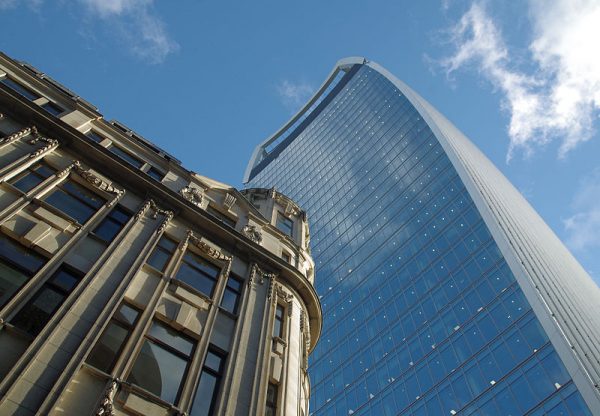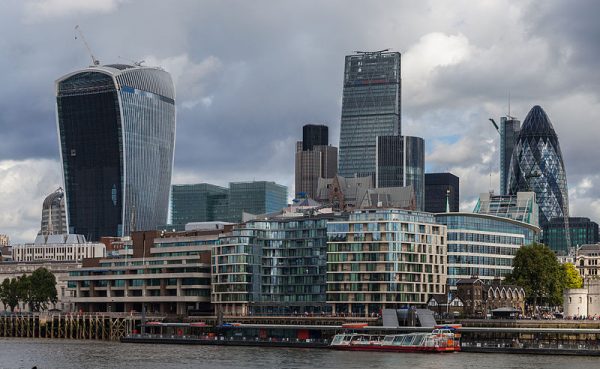In February of 1988, Chicago’s Sears Tower began shedding sheets of glass as wind speeds reached up to 70 miles per hour. For hours, some falling windows shattered other windows on their way down while others soared as far as a block away before crashing to the ground. This was not the first nor last time the building lost windows to wind.
Tall buildings are typically designed with wind loads in mind, making this structure’s woes rare and exceptional (even in the Windy City). But not all designs manage to factor the impact of winds on surrounding spaces, which can prove dangerous (even deadly) to pedestrians.

Across the pond in Leeds, England another tower has had to contend with these more external wind issues. Bridgewater Place (also known as “The Dalek”), was completed in 2007 and promptly nominated for the Carbuncle Cup (an award for the worst building of the year).
Aside from its aesthetics, though, the structure has caused real and serious problems for passersby on the streets and sidewalks below. Prevailing winds hitting the tower are channeled down its side, resulting in ground-level wind speeds of up to 80 miles per hour.

In 2011, a truck was lifted and flipped by these winds, tragically crushing a pedestrian in the process. A baby stroller containing an infant narrowly avoided disaster, brought under control after being blown out into the street. Pedestrians have been knocked over on a regular basis as well, resulting in an array of injuries over the years.
Various attempts to curb the problem have been implemented over time, starting with reduced speed limits around the building. Structural additions to mitigate winds have been mandated at an estimated cost of over a million dollars (900,000 pounds) to the building owners.

And no discussion of disaster-prone buildings would be complete without London’s “Walkie-Talkie Tower” at 20 Fenchurch Street. Finished in 2014, this infamous structure won a Carbuncle Cup and has made headlines time and time again for its various follies.
During construction, it was discovered that its concave facade could reflect and channel sunlight, raising temperatures on the streets below. The skyscraper managed to melt plastic components of a parked vehicle and even light a rug on fire in a nearby structure. One reporter demonstrated its power by frying an egg on street-side masonry.

Non-reflective film has since been added, but not before the building earned a new nicknames like “Walkie-Scorchie” and “Fryscraper” (perhaps the world’s most famous work of “Arsontecture”).

Like The Dalek, the building has also been cited as a source of strong winds at street level, channeled by its shape. Local street vendors have been advised to add warnings to their carts, making customers aware that an errant food trolley could be flipped and fall on them.
Taking a wider view: it can be hard to predict what the total effects (in terms of wind or solar channeling) will be on streets from all surrounding buildings. So-called “street canyons” in dense cities, for instance, can create micro-climates and channel winds. Still, there are lessons to be learned from individual towers that have proved dangerous to those on the streets they overshadow.



Comments (7)
Share
Museum Tower in Dallas Texas has a similar problem…
Just a little typo:
“The skyscraper managed to meld plastic components of a parked vehicle”
meld -> melt
A building at MIT was originally designed with a giant glass sphere over an atrium, but it ended up not being included for cost reasons. When a discussion of the building said that it was “ugly enough to cause birds to spontaneously combust”, I pointed out that that wasn’t literally true as built.
23 skidoo…
I wonder how many people got a sunburn standing in near the Walkie Talkie building.
Time to install some solar tiles. Maybe Elon Musk can hook them up.
Didn’t the Vdara Hotel in Las Vegas suffer from the same problem at it’s pools?
I’m glad you called it the Sears tower instead of that “other” name, even though that “other” name is shown in the video. The Vdara hotel in Vegas is known for burning people laying out at the pool too.